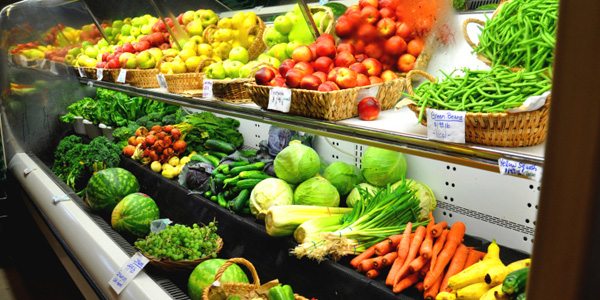With California experiencing one of its worst droughts on record, grocery shoppers across the country can expect to see a short supply of certain fruits and vegetables in stores and to pay higher prices for those items. Professor Timothy Richards of the W. P. Carey School of Business at Arizona State University recently completed some research on which crops will likely be most affected and what the price boosts might be.
“You’re probably going to see the biggest produce price increases on avocados, berries, broccoli, grapes, lettuce, melons, peppers, tomatoes and packaged salads,” says Richards, the Morrison Chair at the Morrison School of Agribusiness within the W. P. Carey School of Business. “We can expect to see the biggest percentage jumps in prices for avocados and lettuce – 28 percent and 34 percent, respectively. People are the least price-sensitive when it comes to those items, and they’re more willing to pay what it takes to get them.”
Industry estimates range from a half-million to 1 million acres of agricultural land likely to be affected by the current California drought. Richards believes between 10 and 20 percent of the supply of certain crops could be lost, and California is the biggest national supplier of several of those crops. For avocados, the state is the only major domestic source.
Richards used retail-sales data from the Nielsen Perishables Group, an industry analytics and consulting firm, to estimate price elasticities – how much the prices might vary – for the fruit and vegetable crops most likely to be affected by the drought. Those most vulnerable are the crops that use the most water and simply won’t be grown, or those sensitive to reductions in irrigation.
He estimates the following possible price increases due to the drought:
* Avocados likely to go up 17 to 35 cents to as much as $1.60 each.
* Berries likely to rise 21 to 43 cents to as much as $3.46 per clamshell container.
* Broccoli likely to go up 20 to 40 cents to a possible $2.18 per pound.
* Grapes likely to rise 26 to 50 cents to a possible $2.93 per pound.
* Lettuce likely to rise 31 to 62 cents to as much as $2.44 per head.
* Packaged salad likely to go up 17 to 34 cents to a possible $3.03 per bag.
* Peppers likely to go up 18 to 35 cents to a possible $2.48 per pound.
* Tomatoes likely to rise 22 to 45 cents to a possible $2.84 per pound.
“We predict the increased prices will change consumer purchasing behavior,” says Sherry Frey, vice president of Nielsen Perishables Group. “We’ve identified certain consumers who will be more heavily affected by the price increases — for example, younger consumers of avocados. In addition, there is a larger department and store impact retailers will need to manage. While some consumers will pay the increased prices, others will substitute or leave the category completely. And, for a category like avocados, there are non-produce snacking categories, such as chips, crackers and ethnic grocery items, that will be negatively impacted.”
Richards adds, “One other thing for shoppers to understand — Because prices are going to go up so much, retailers will start looking elsewhere for produce. This means we’ll see a lot more imports from places like Chile and Mexico, which may be an issue for certain grocery customers who want domestic fruit and vegetables.”




